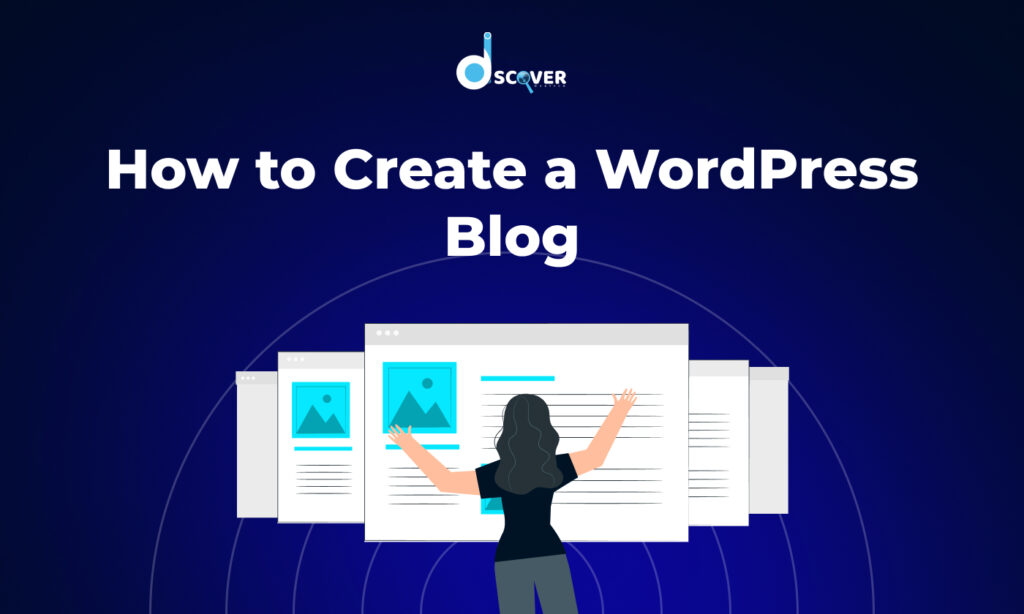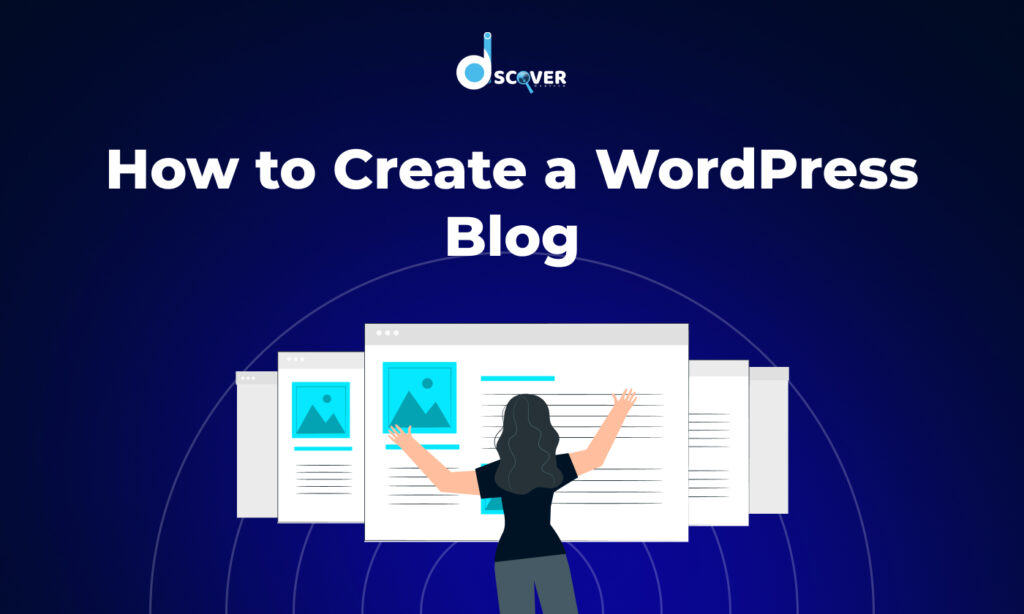
Starting a blog has become one of the best ways to share your thoughts, ideas, and even start a business. If you’ve decided to start a blog, WordPress is one of the most popular and user-friendly platforms you can use. In this blog, we will walk you through the steps on how to create a WordPress blog, from choosing a domain name to publishing your first post.
Why Choose WordPress for Your Blog?
Before we dive into the technical steps, let’s briefly discuss why WordPress is a great choice for bloggers. WordPress is a free and open-source platform, making it affordable and flexible for everyone, from beginners to advanced users. With thousands of themes and plugins, WordPress allows you to fully customize your blog’s design and functionality. Additionally, it’s SEO-friendly, meaning it’s easier to rank your blog on search engines, making it a top choice for bloggers worldwide. Moreover, WordPress is great for SEO for bloggers, offering built-in tools and plugins like Yoast SEO to help optimize your blog content and improve search engine rankings.
Step 1: Getting Started with WordPress
Choosing a Domain Name
The first step in how to create a WordPress blog is selecting a domain name. Your domain name is your blog’s web address (e.g., www.yourblog.com). It should reflect your blog’s purpose and be easy to remember. Try to keep it short, catchy, and relevant to your niche.
Selecting a Web Hosting Provider
Once you have your domain name, the next step is to choose a web hosting provider. Hosting is where your blog’s files will be stored. There are many hosting companies available, such as Bluehost, SiteGround, and HostGator, that offer one-click WordPress installations. These hosts are beginner-friendly and offer great customer support.
Installing WordPress
After selecting a host and purchasing your domain name, you can install WordPress on your hosting account. Most hosting providers offer an automatic installation process, making it as simple as clicking a button. Once WordPress is installed, you can log in to your new blog’s dashboard using your admin credentials.
Step 2: Setting Up Your WordPress Blog
Configuring Basic Settings
The next step in how to create a WordPress blog is configuring the basic settings. After logging into your WordPress dashboard, go to Settings > General. Here, you’ll set your blog’s title and tagline, which will be displayed on your site. You can also set the date and time format and choose the preferred language for your blog.
Choosing a Theme
WordPress offers thousands of free and premium themes to choose from. A theme controls the design and layout of your blog. To select a theme, go to Appearance > Themes in your WordPress dashboard. You can either use a free theme or purchase a premium one for more features and customization options. Don’t worry if you’re new to WordPress; most themes are customizable, and you can change colors, fonts, and layout easily.
Customizing Your Blog’s Appearance
Once you’ve chosen a theme, the next step is to customize it. Go to Appearance > Customize in your dashboard. From here, you can change your site’s colors, fonts, and layout. You can also add your logo, set a background image, and adjust other design elements to make your blog unique. Take your time with this step, as the visual appeal of your blog is crucial for attracting readers.
Step 3: Creating Essential Pages
Setting Up a Homepage
Your homepage is the first thing visitors will see when they land on your blog. To set up a homepage, go to Settings > Reading in your WordPress dashboard. Here, you can choose whether you want your latest posts to be displayed on the homepage or if you want to set a static page as your homepage. Most bloggers prefer to use a static page for a more professional look, which you can create by going to Pages > Add New.
Creating an About Page
An about page helps readers understand who you are and what your blog is about. To create an about page, go to Pages > Add New and write a brief description about yourself and the purpose of your blog. This is a great opportunity to connect with your audience and make your blog more personal.
Adding a Contact Page
A contact page is essential if you want your readers to reach out to you. You can create a simple contact form using plugins like Contact Form 7 or WPForms. Install the plugin, create a form, and add it to your contact page.
Step 4: Installing Essential Plugins
Plugins extend the functionality of your WordPress blog. There are several essential plugins every blogger should install. Some of these include:
- Yoast SEO: Helps optimize your blog posts for search engines.
- Akismet Anti-Spam: Protects your blog from spam comments.
- Jetpack: Provides security, performance, and site management tools.
- WP Super Cache: Speeds up your blog by caching static files.
To install plugins, go to Plugins > Add New, search for the plugin you want, and click “Install Now.” After installation, click “Activate.”
Step 5: Writing Your First Blog Post
Now that your blog is set up, it’s time to write your first blog post. To create a post, go to Posts > Add New in your dashboard. You’ll be taken to the post editor, where you can enter your content.
Make sure to format your post properly by using headings, subheadings, and bullet points to make it easy to read. Add images and media by clicking the “Add Media” button above the editor. For SEO purposes, ensure your post is well-written, includes keywords, and has a catchy title.
Step 6: Publishing and Promoting Your Blog
Once you’ve written your first post, it’s time to publish it! Before publishing, preview your post to check for any errors or formatting issues. Once you’re satisfied, click the Publish button.
To drive traffic to your blog, share your posts on social media platforms like Facebook, Twitter, and Instagram. You can also join blogging communities and engage with other bloggers to increase your reach.
Step 7: Maintaining Your WordPress Blog
Maintaining your blog is essential for long-term success. Ensure you update your WordPress version, plugins, and themes regularly. You should also back up your blog regularly to prevent data loss.
Speed is important for user experience, so optimize your blog’s loading time by using caching plugins and optimizing images. Security is also crucial, so install security plugins like Wordfence to protect your site from hackers.
Final Thoughts
Starting a WordPress blog is a rewarding experience, and with the right steps, you can create a successful blog that attracts readers and grows over time. By following the steps on how to create a WordPress blog, from setting up your domain to publishing your first post, you’ll be well on your way to becoming a successful blogger. If you want to take your blog to the next level, consider working with an expert WordPress developer who can help optimize your site and add custom features. Keep learning, keep posting, and enjoy the process of blogging! Check out our latest blog on Plugins for WordPress for more tips and tricks to enhance your Snapchat experience!



